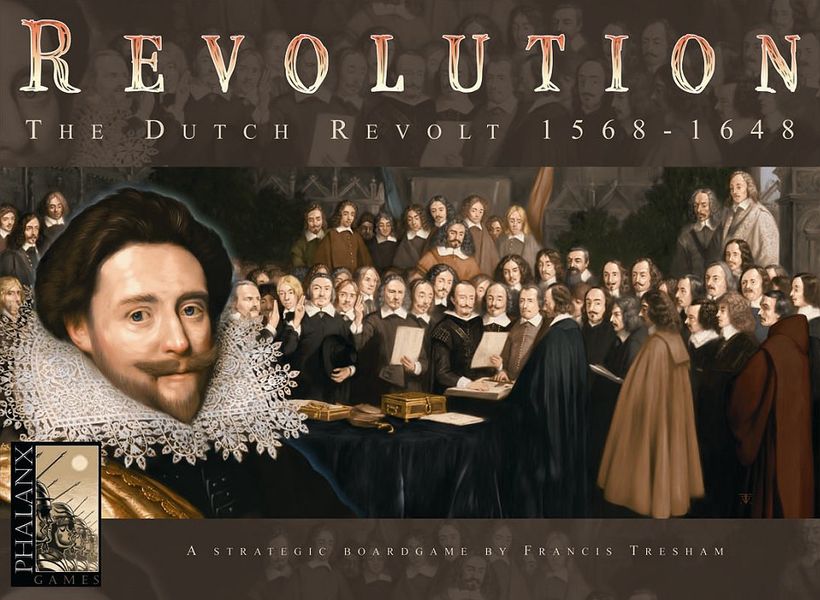Revolution: The Dutch Revolt 1568-1648 (2004) Board Game
Revolution: The Dutch Revolt 1568-1648 is a board game that focuses on the conflict between the Spanish Empire and the rebellious provinces of the Netherlands during the late 16th and early 17th centuries. Players take on the roles of various factions involved in the conflict, from the Spanish forces to the Dutch rebels, as they vie for control over key territories and resources.
Game Components of Revolution: The Dutch Revolt 1568-1648
How To Setup Revolution: The Dutch Revolt 1568-1648
To set up the game, players first place the game board in the middle of the playing area. Each faction selects its respective starting influence tokens, army units, and cash tokens according to their unique setup parameters. For example, the Catholics start with a strong board presence and cash, while the Reformers begin with cheap armies but no initial cash. The city and countryside markers are placed on designated areas on the board. Players then receive their faction-specific objective cards and off-board ally cards.
Gameplay Mechanics and Game Objective
Player Experience
Playing **Revolution: The Dutch Revolt 1568-1648** is a complex yet engaging experience. The game combines strategic resource management with area control mechanics, making it a tactical challenge. The differentiation between factions adds a layer of depth, as each faction plays differently due to their distinct parameters and objectives. This variability ensures that playing a different faction feels like playing a different game.
Pros
Cons
Personal Thoughts on Revolution: The Dutch Revolt 1568-1648
**Revolution: The Dutch Revolt 1568-1648** is ideal for experienced board game enthusiasts who enjoy strategic games with deep faction differentiation. It is particularly suited for those interested in historical themes and complex gameplay mechanics. However, it may not be the best choice for casual gamers or those looking for a quick, simple game. The unique blend of resource management, area control, and faction-specific objectives makes it a standout in the world of board games.
We are supported by our audience. When you purchase through links on our site, we may earn an affiliate commission, at no extra cost for you. Learn more.

